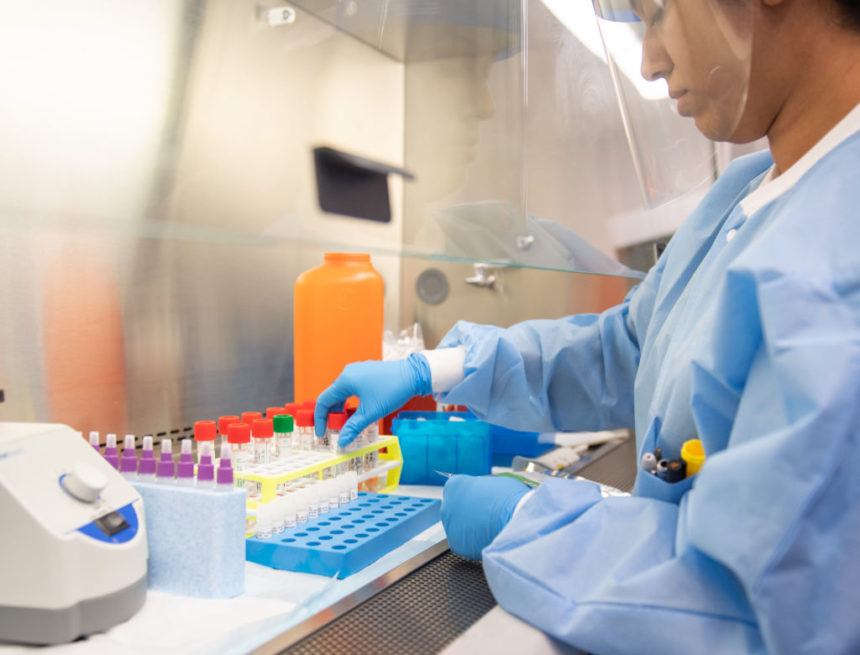Amid a declining number of COVID-19 cases across the U.S., health officials and the public alike have lowered their guards for perhaps the first time since the pandemic started more than two years ago.
Loosened mask and social distancing regulations, a drop in the volume of testing and lowered urgency to replenish federal pandemic aid funds all suggest a nation that’s just plain over COVID-19. But calls for caution over inevitable new variants have served to highlight numerous weak spots in the U.S. public health infrastructure.
Perhaps the most crucial of the bunch is the nation’s health data reporting system, which didn’t exactly distinguish itself during the pandemic’s worst months. The federal government’s reliance on state health departments to gather COVID-19 data – and the dependence of those departments on outdated systems and inconsistent practices – led to major data reporting blunders when COVID first hit in 2020.
Two years later, it’s unclear whether needed improvements have been made – and, as a result, whether the U.S. is prepared to stem future outbreaks before they consume the country the way COVID did.
The most troubling aspect of it all? That the problem is one that dates back decades.
“In general, public health data infrastructure has never been prioritized in the U.S.,” said Dr. Amesh Adalja, a senior scholar at Johns Hopkins Bloomberg School of Public Health.
Indeed, some of the reporting has been done by hand on paper and circulated via fax. Modern-era techniques enabled and facilitated by Big Data have only sporadically been tapped.
Among the most troubling issues during the first wave of the pandemic were staff shortages at labs, which resulted in a backlog in COVID-19 test results. When those lab results weren’t sent electronically to state health departments, they would need to be manually entered into the system, leading to more delays. In tandem, those issues contributed to states falling weeks behind in reporting case and death numbers to the Centers for Disease Control and Prevention, ultimately hindering the federal response.
Not surprisingly, many people turned to non-government sources, such as Our World in Data or the New York Times COVID-19 tracker, rather than local health departments for reliable and up-to-date information.
CDC officials have acknowledged a need to prioritize data modernization. In 2020, the agency launched its Data Modernization Initiative (DMI), a federal effort to implement modern and real-time data and surveillance systems that could be used during public health crises. The initiative aims to strengthen early warning systems for emerging health threats, bolster the public health workforce and improve analysis for trends related to race and ethnicity.
“Our ultimate goal is to move from siloed and brittle public health data systems to connected, resilient, adaptable and sustainable ‘response-ready’ systems that can help us solve problems before they happen and reduce the harm caused by the problems that do happen,” the CDC website states.
Recently, CDC officials encouraged staff in internal emails to embrace data-modernized efforts, pointing to the DMI as the prime example. But at the same time, the agency acknowledged that significant gaps remain, noting on its website that “we have made incredible progress, but we still have a long way to go.”
Adalja pointed to New York City’s health department as one that has bolstered its data capabilities during the last two years. But he stressed that data modernization needs to be a continuous process for local and state health departments.
“Maybe NYC is up to date now with 2022 standards, but the technology and data processing needs to keep up,” Adalja said. “It has to be part of [health departments’] core missions that they’re using the most cutting-edge tools to do their work… There have been some improvements, but they have to be sustainable and not just tied to one moment in time.”
Obviously, this comes down to funding as much as it does awareness. But that funding, Adalja stressed, has to be consistently meted out during non-crisis periods. It’s not just about fighting back the next coronavirus: Adalja noted a profound need to more attentively monitor existing diseases such as measles, STDs and HIV.
“We have to start holding politicians accountable for de-prioritizing data and other public health tools,” he added. “Voters need to ask anybody running for office, ‘What’s your plan for public health infrastructure?’ We have a window of opportunity to fix these issues, and it’s really about advocating around them.”







